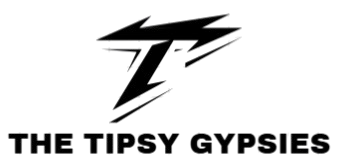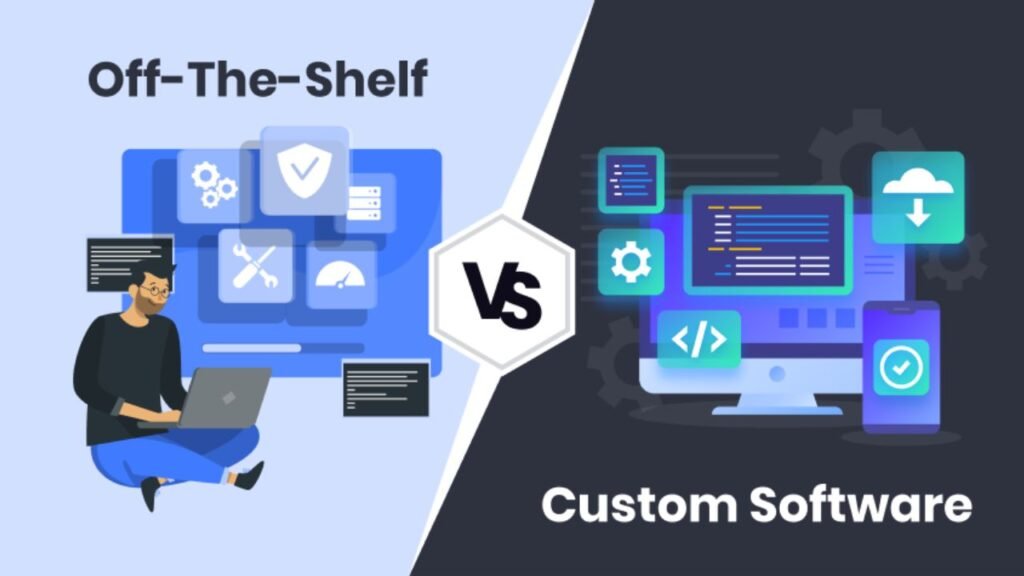The software decision that keeps many executives awake at night isn’t about choosing between competing vendors or evaluating technical specifications. It’s the fundamental question of whether to build or buy, to invest in custom development or leverage existing solutions that promise immediate deployment and proven functionality. This decision carries implications that extend far beyond initial costs, touching every aspect of operational efficiency, competitive positioning, and long-term strategic flexibility.
The complexity of this choice has intensified as both custom development capabilities and off-the-shelf solutions have evolved dramatically. Modern development frameworks enable faster, more cost-effective custom solutions, while software-as-a-service platforms offer unprecedented functionality and integration capabilities. The result is a decision landscape where traditional assumptions about cost, time, and risk no longer provide clear guidance.
Organizations that make this decision based solely on immediate financial considerations often find themselves constrained by choices that seemed prudent initially but become strategic liabilities over time. Conversely, those that pursue custom development without realistic assessment of their capabilities and requirements frequently encounter cost overruns and implementation challenges that could have been avoided through careful analysis.
The most successful organizations approach this decision through a strategic lens that considers not just current needs but future growth, competitive differentiation, and the role of technology in their overall business strategy. This requires moving beyond simple cost comparisons to comprehensive analysis of how software choices will impact organizational capabilities over time.
Understanding the True Economics of Software Decisions
The financial analysis of build versus buy decisions requires sophistication that extends far beyond comparing initial purchase prices with development estimates. Total cost of ownership encompasses not just acquisition costs but ongoing maintenance, upgrades, training, and the opportunity costs associated with different strategic paths.
Off-the-shelf solutions often appear more economical initially, but their true costs emerge over time through licensing fees, customization requirements, integration expenses, and the operational overhead of working within system constraints. Organizations frequently discover that achieving their desired functionality requires extensive customization that negates many of the supposed cost advantages of packaged solutions.
Custom development investments, while requiring higher upfront capital, can deliver superior long-term economics when the software becomes a strategic asset that differentiates the organization and enables capabilities that competitors cannot easily replicate. The key is understanding when software functionality represents a core competency versus a commodity requirement.
The financial analysis must also consider the cost of inaction or suboptimal solutions. When software limitations constrain business growth, impact customer satisfaction, or prevent operational efficiency improvements, the opportunity costs can far exceed the incremental investment required for custom development.
Strategic Differentiation Through Technology Choices
In today’s competitive landscape, software often represents the primary interface between organizations and their customers, making technology choices critical components of competitive strategy. Off-the-shelf solutions, by their nature, provide similar capabilities to all users, making it difficult to create meaningful differentiation through software functionality.
Custom development enables organizations to embed their unique processes, competitive advantages, and strategic insights directly into their technology infrastructure. This creates barriers to competitive imitation while ensuring that software capabilities align perfectly with business strategy and operational requirements.
The strategic value of custom software extends beyond customer-facing applications to internal systems that can enable operational efficiencies, decision-making capabilities, and organizational learning that competitors cannot easily duplicate. When software becomes a strategic asset rather than a commodity tool, the investment calculus changes dramatically.
However, custom development for non-strategic applications often represents poor resource allocation. Organizations must carefully evaluate which capabilities truly differentiate their business and warrant custom development versus those that can be effectively addressed through standard solutions.
Operational Flexibility and Adaptation Requirements
Business environments change rapidly, and software systems must be able to adapt to evolving requirements, new opportunities, and shifting competitive dynamics. This adaptability represents a critical factor in the build versus buy decision that often receives insufficient attention during initial evaluations.
Off-the-shelf solutions typically offer limited customization options and follow vendor-driven roadmaps that may not align with organizational priorities or timelines. When business requirements change, organizations may find themselves constrained by software limitations or forced to invest in expensive customizations that compromise system integrity.
Custom solutions, when properly architected, can be modified and enhanced to meet changing requirements without the constraints imposed by vendor limitations or third-party roadmaps. This flexibility becomes particularly valuable for organizations operating in dynamic markets or pursuing innovative business models.
The trade-off is that custom solutions require internal capabilities or partner relationships that can effectively manage ongoing development and maintenance. Organizations must honestly assess their ability to sustain custom systems over time and ensure that flexibility benefits justify the additional complexity.
Risk Assessment and Mitigation Strategies
Both custom development and off-the-shelf solutions carry distinct risk profiles that must be carefully evaluated and managed. Understanding these risks enables organizations to make informed decisions and develop appropriate mitigation strategies.
Custom development risks include cost overruns, timeline delays, technical challenges, and the potential for solutions that don’t meet requirements or perform as expected. These risks can be mitigated through careful vendor selection, structured development methodologies, and realistic project scoping, but they cannot be eliminated entirely.
Off-the-shelf solution risks include vendor dependency, limited customization options, integration challenges, and the possibility that vendor priorities or business models may change in ways that negatively impact the organization. These risks are often underestimated because they may not manifest until years after initial implementation.
The most effective risk management strategies involve diversification and contingency planning that can accommodate various scenarios. This might include choosing development partners with proven track records, maintaining relationships with multiple software vendors, or designing systems with sufficient modularity to enable future changes.
Integration and Ecosystem Considerations
Modern organizations operate complex technology ecosystems where individual software components must work seamlessly together to deliver comprehensive business capabilities. The integration requirements and ecosystem compatibility of different software choices can significantly impact their long-term value and viability.
Off-the-shelf solutions often provide extensive integration capabilities with other popular platforms, but these integrations may not address the specific requirements of every organization. Custom development may be required to achieve seamless integration even when using packaged solutions as core components.
Custom solutions offer maximum integration flexibility but require careful architecture and design to ensure compatibility with existing systems and future technology choices. Working with a custom enterprise software development company with experience in complex integration scenarios can help organizations navigate these challenges effectively.
The ecosystem considerations extend beyond technical integration to include vendor relationships, support structures, and the long-term viability of different technology choices. Organizations must evaluate not just current integration requirements but how their technology ecosystem is likely to evolve over time.
Organizational Capabilities and Resource Requirements
The success of either custom development or off-the-shelf implementation depends heavily on organizational capabilities, resources, and cultural factors that may not be immediately apparent during initial decision-making processes.
Custom development requires project management capabilities, technical oversight, and ongoing maintenance resources that many organizations lack internally. Without these capabilities, custom development projects can quickly become expensive failures that deliver poor outcomes and create long-term maintenance burdens.
Off-the-shelf solutions, while appearing simpler to implement, often require significant change management, training, and business process adaptation to realize their full value. Organizations that underestimate these requirements frequently achieve suboptimal results even with well-designed software solutions.
The most successful implementations align software choices with organizational strengths and capabilities while addressing weaknesses through partnerships, training, or strategic hiring. This requires honest assessment of internal capabilities and realistic planning for capability development or acquisition.
Decision Framework and Evaluation Criteria
Developing a structured approach to the build versus buy decision enables organizations to evaluate options consistently and make choices that align with strategic objectives. This framework should consider multiple dimensions beyond simple cost comparisons.
Strategic alignment should be the primary consideration, evaluating how different software choices support or constrain business strategy, competitive positioning, and long-term growth objectives. Software that enables strategic capabilities or competitive differentiation may justify higher investments and implementation complexity.
Operational impact analysis should examine how different solutions will affect business processes, user productivity, and organizational efficiency. The best software choices are those that enhance rather than constrain operational effectiveness while providing room for future optimization and improvement.
Risk tolerance and mitigation capabilities should influence the decision based on organizational capacity to manage different types of implementation and operational risks. Some organizations thrive with the flexibility and control of custom solutions, while others prefer the predictability and support of established vendors.
Timeline and Implementation Considerations
The urgency of business requirements and available implementation timelines often influence software decisions, but these factors should be balanced against long-term strategic considerations. Rush decisions frequently result in suboptimal outcomes that create long-term constraints.
Off-the-shelf solutions typically offer faster implementation timelines, but the actual time to realize business value may be longer when extensive customization, integration, and change management requirements are considered. Organizations should evaluate total time to value rather than just initial deployment timelines.
Custom development timelines are often longer and more variable, but the resulting solutions may deliver value more quickly once deployed because they align more closely with organizational requirements and processes. Phased implementation approaches can help organizations realize value incrementally while managing implementation risks.
Conclusion
The choice between custom software development and off-the-shelf solutions represents a strategic decision that should align with organizational objectives, capabilities, and long-term vision. Neither approach is universally superior; the optimal choice depends on specific circumstances, requirements, and strategic priorities.
Organizations that succeed in making these decisions focus on understanding their unique requirements, honestly assessing their capabilities, and evaluating options through a comprehensive framework that considers strategic, operational, and financial factors. The goal is not to make the cheapest or fastest decision but to choose the approach that best positions the organization for long-term success.
Devsinc helps organizations navigate these complex decisions by providing strategic guidance, technical expertise, and implementation capabilities that ensure software investments deliver maximum value regardless of whether they involve custom development or off-the-shelf solutions.






